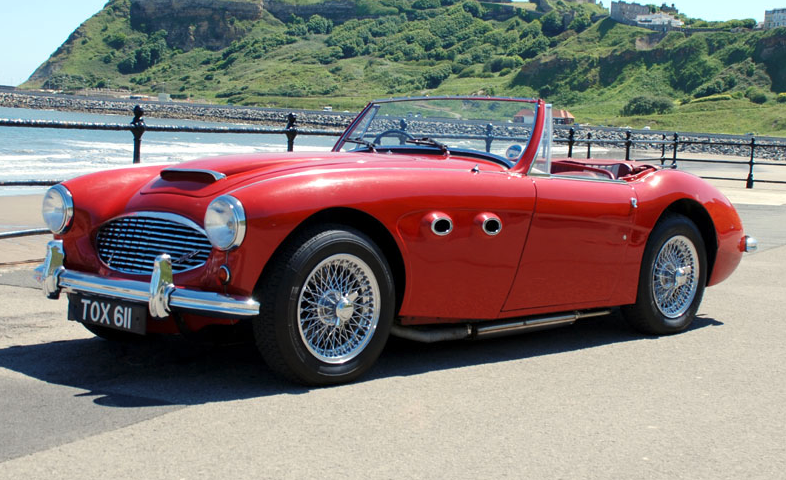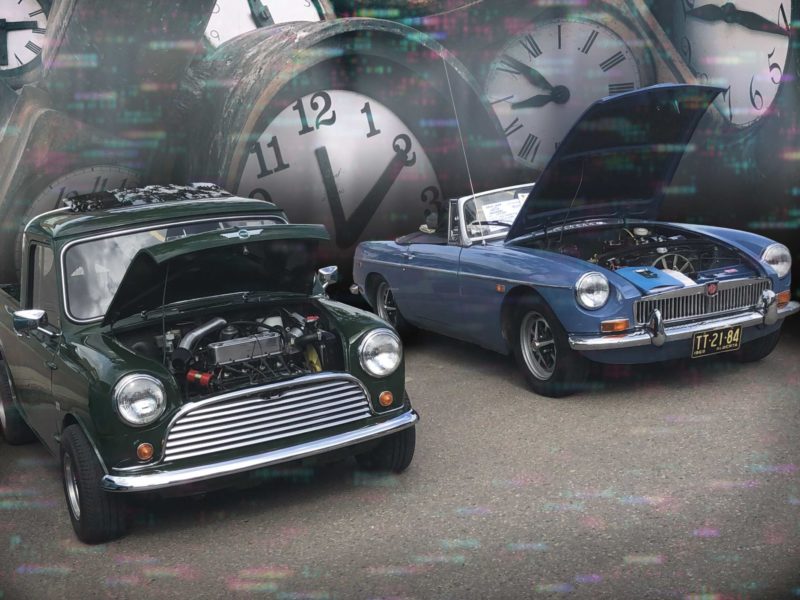The original Austin-Healey 100 was successful from the start through the winning combination of the inimitable styling penned by Gerry Coker and the surfeit of torque provided by the Austin A90 engine. Not content to rest on his laurels – and aware that challengers like the Triumph TR2 were real threats in the marketplace – Donald Healey was continually searching for ways to improve performance. The Weslake cylinder head used on the 100S offered the best results with 132 bhp on tap, but the 100M was able to produce 110 bhp with the standard head through installation of larger carburetors and intake manifolds with a camshaft of longer duration and greater lift. An improved distributor, sturdier valvetrain and suspension components completed the package along with the option of high compression pistons and a vented bonnet.
Further development of the four-cylinder engine was suspended when Austin announced that production of the units would soon end and encouraged Healey to use the six-cylinder C-Series engine as a replacement. At least four cars were used by Healey to accommodate the use of the larger engine and the history of the various BN3s is well documented with BN3/1 owned by Patrick Quinn in Australia and BN3/4 at the Healey Museum in the Netherlands. Healey also fitted OAC 1 – the special test coupe – with a C-Series unit.
Adapting the engine compartment of the 100 to accept the longer engine was fraught with problems and required modification of the firewall and footwells and removal of shroud bracing on the passenger – left – side. Patrick Quinn has stated that the two surviving prototypes – BN3/1 and BN3/4 never passed through the Experimental Workshop – so its likely that Austin had their hands in trying to adapt the 100 for C-Series power as well.
Initially intended for life as a standard 1953 BN1, Austin-Healey TOX 611 was withdrawn from the production line before final completion and turned over to the Austin Experimental Workshop under the direction of Dick Gallimore. Over the next three years it was subjected to use as a developmental mule for various modifications and was eventually fitted with a C-Series engine and provided with rear seats by the workshop (it’s unclear what input the Warwick staff had with these changes).

Roll up windows distinguish TOX 611 from the BN3 prototypes and presage the BJ series by several years
Unlike the BN3 mules, TOX 611 had extensive changes made to its bodywork with roll-up windows, fixed quarter-lights on the windscreen frame, front disc brakes, adjustable rear shocks and wing vents on both sides. The biggest difference is that at some point TOX 611 also gained the hood and fascia that would mark all the later six-cylinder cars. With production of the 100-6 well underway, TOX 611 was sold in 1956 to Basil Cardew with the notation that it was a BN4 Prototype in “as new” condition.
Restored by a subsequent owner, the car was offered for sale at auction by H & H Motorcars in 2010 where it was passed through on the block. Sold afterwards in a private sale the car remains an important link to the development of the immortal six-cylinder Healeys.
By Johnny Oversteer
Images courtesy of H & H Motorcars











'Missing Links – Austin-Healey TOX 611' has no comments
Be the first to comment this post!